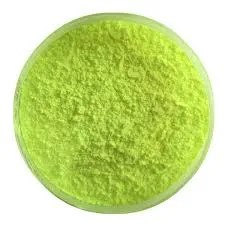Chemical Additives in Plastics Enhancing Performance and Safety
Plastics have become ubiquitous in modern society due to their versatility, durability, and cost-effectiveness. However, the performance and longevity of plastic materials are often enhanced by the incorporation of various chemical additives. These additives, which can constitute a significant percentage of the material's composition, play a crucial role in improving the physical, chemical, and mechanical properties of plastics. This article explores the types of chemical additives used in plastics, their functions, and their implications for health and the environment.
Types of Chemical Additives
1. Stabilizers One of the most common types of additives are stabilizers, which are used to prevent degradation of plastic under heat, light, and environmental stress. For instance, UV stabilizers help protect plastics from the damaging effects of ultraviolet radiation, while heat stabilizers are crucial for maintaining the integrity of plastics during processing and use.
2. Plasticizers These substances are added to improve the flexibility and workability of plastics. Commonly used in polyvinyl chloride (PVC), plasticizers reduce brittleness and allow the material to be formed into complex shapes. However, some plasticizers, such as phthalates, have raised health concerns, prompting research into safer alternatives.
3. Fillers To reduce costs and enhance certain properties, fillers such as talc, calcium carbonate, or glass fibers are added to plastics. These materials can improve tensile strength, impact resistance, and thermal stability. Moreover, fillers can contribute to reducing the overall weight of plastic products, making them easier to handle and transport.
4. Colorants Colorants are used to impart specific colors to plastics, enhancing their aesthetic appeal. Dyes and pigments can be added in various concentrations to achieve the desired hue, which is especially important in consumer products. However, the source and composition of these colorants must be carefully selected to ensure they do not leach harmful substances.
5. Flame Retardants Given the rising concern for fire safety, flame retardants are critical additives in many plastic products, especially in electronics and textiles. These substances work by slowing the spread of fire or reducing flammability. Yet, there is ongoing debate regarding the environmental and health impacts of certain flame retardants, necessitating a balance between safety and sustainability.
chemical additives in plastics

Health and Environmental Concerns
While chemical additives are essential for the functionality of plastics, they also pose potential health and environmental risks. Certain additives, particularly those that can migrate out of the plastic matrix into the environment or human body, have been linked to endocrine disruption and other health issues. For instance, phthalates, often used as plasticizers, have been associated with reproductive and developmental problems.
Moreover, the environmental impact of plastic additives is increasingly scrutinized. When plastics degrade in landfills, additives can leach into the soil and waterways, leading to long-term ecological consequences. This has prompted regulatory bodies to impose stricter guidelines on the use of certain harmful additives and to promote the development of biodegradable alternatives.
Moving Towards Safer Alternatives
In response to growing awareness of the risks associated with certain chemical additives, the industry is actively seeking safer alternatives. Bioplastics, derived from renewable resources, and non-toxic additives are gaining traction. Furthermore, advancements in material science are leading to innovative solutions such as polymer blends and composites that require fewer or no hazardous additives.
Additionally, the circular economy model advocates for recycling and reusing plastics, aiming to minimize waste and reduce reliance on new materials. This model encourages manufacturers to consider the entire lifecycle of plastic products, from production to disposal, and to select additives that facilitate recycling.
Conclusion
Chemical additives in plastics are essential for enhancing performance and functionality across various applications. However, the challenges associated with their safety and environmental impact must be addressed. Through innovation and regulation, the industry can move towards sustainable practices that protect both human health and the planet. As consumers become more conscious of the materials they use, the demand for safer, more environmentally-friendly plastics will likely continue to grow, driving the evolution of plastic technology.

